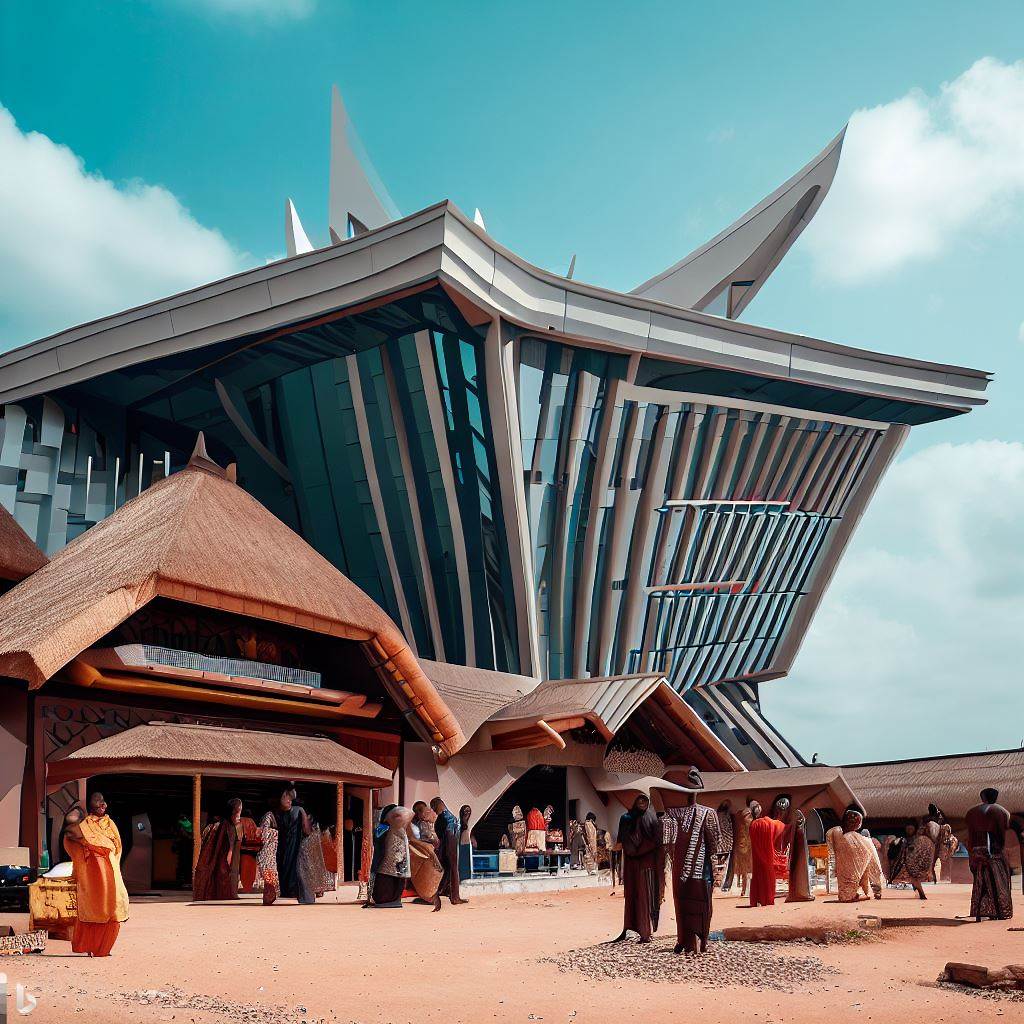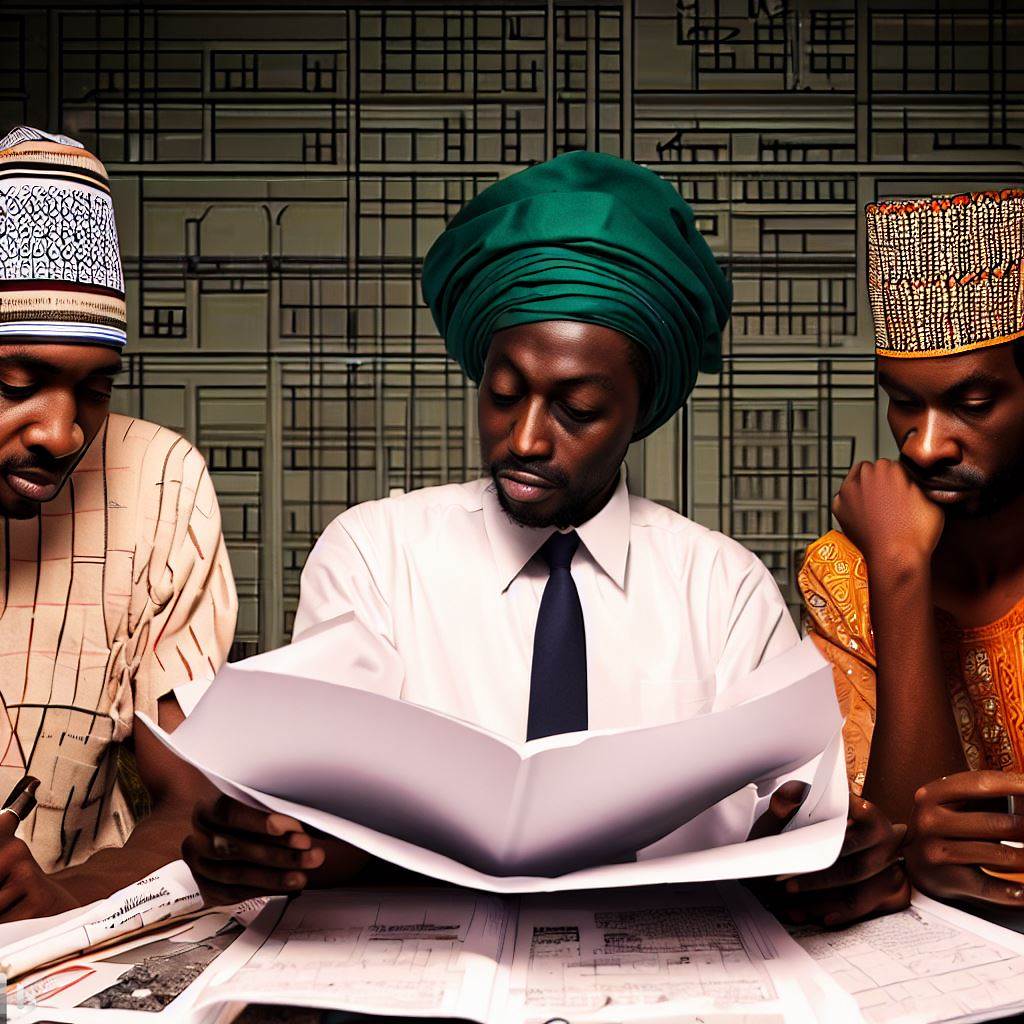Introduction
In Nigeria, there is an ongoing debate about whether the country’s architecture should lean more towards tradition or modernism.
One school of thought argues that modern design can help the country achieve international relevance, while others contend that this comes at the expense of Nigeria’s cultural heritage.
It is essential to balance modern design and tradition in Nigerian architecture because it allows for the preservation of cultural identity while still promoting development.
The integration of traditional architectural principles such as the use of local materials, respect for the environment, and functional design with modern design approaches such as contemporary building technology, innovations, and urbanization create a unique blend that showcases Nigeria’s cultural heritage.
The significance of balancing modern design and tradition in Nigerian architecture lies in its potential to boost tourism, promote economic growth, and inspire local artisans to continue perfecting their traditional construction techniques.
A successful blend of modern and traditional architecture is seen in the National Theatre in Lagos, which fuses traditional African motifs with a modern, functional design.
In essence, it is pertinent to find a balance between modern design and tradition in Nigerian architecture.
The approach will preserve Nigeria’s cultural identity while encouraging a modern and functional design concept.
It is the perfect solution to achieve international relevance and economic growth while still holding onto the country’s rich cultural heritage.
Read: Role of Women in Nigeria’s Thriving Architecture Scene
The Concept of Modern Design in Nigerian Architecture
Definition of modern design
Modern design refers to a contemporary style that follows the latest trends and development in architecture, art, and fashion, characterized by simplicity, functionality, and a lack of ornamentation.
Characteristics of modern design in Nigerian architecture
Modern design in Nigerian architecture is marked by the use of new and innovative materials such as glass, steel, and concrete.
It also prioritizes functionality and clean lines with minimal ornamentation. Additionally, it values openness and natural light, as well as sustainability and energy efficiency.
Examples of modern designs in Nigerian architecture
The Lekki Conservation Center in Lagos is an example of modern design in Nigerian architecture. It features a suspended canopy walkway and treehouses with a view of the park.
The Civic Center, Victoria Island, built with steel and glass, is another example that demonstrates how modern design is versatile and can be adapted to various building types.
The Eko Atlantic City Project is also an example of modern design in Nigeria.
Advantages and Disadvantages of modern design in Nigerian Architecture
One advantage of modern design in Nigerian architecture is its adaptability to the changing needs of society. It also prioritizes functionality and sustainability, making it cost-effective in the long run.
However, one disadvantage is that it may disregard the cultural and historic context of a site, resulting in a loss of identity and sense of place. Modern design schemes can also be expensive to execute and maintain.
Read: Sustainable Architecture: New Trends in Nigeria
The Concept of Tradition in Nigerian Architecture
Tradition is a fundamental aspect of Nigerian architecture, which has been passed down from generation to generation.
This tradition has given Nigerian architecture its unique identity, which sets it apart from other contemporary architectural designs around the world.
Definition of Tradition in Nigerian Architecture
Tradition in Nigerian architecture refers to the cultural practices, beliefs, and values that have been passed down from one generation to the next.
It encompasses the design and construction practices that have been adopted in Nigeria for centuries, which have been influenced by various factors, including the environment, culture, and religion.
Characteristics of Traditional Nigerian Architecture
Traditional Nigerian architecture is known for its simplicity, practicality, and functionality. It is characterized by the use of locally sourced materials, such as mud, clay, stone, and thatch, which are readily available in most regions of the country.
Additionally, traditional Nigerian architecture is often decorated with intricate patterns and designs, which reflect the cultural and religious beliefs of the people.
Examples of Traditional Nigerian Architecture
One of the most notable examples of traditional Nigerian architecture is the ancient city of Benin.
The city is home to several historical landmarks, such as the Royal Palace, which was built in the 13th century, and the Iyoba Idia Mask, which is believed to date back to the 16th century.
Another notable example of traditional Nigerian architecture is the Hausa-Fulani architecture, which is found in Northern Nigeria.
This style of architecture is characterized by the use of mud and clay in its construction, with buildings typically having flat-roofs, and decorated with intricate designs.
Advantages and Disadvantages of Traditional Nigerian Architecture
One of the main advantages of traditional Nigerian architecture is its sustainability.
The use of locally sourced materials and the incorporation of designs that reflect the local culture and environment make traditional Nigerian architecture eco-friendly and sustainable.
However, traditional Nigerian architecture also has its disadvantages, one of which is the lack of adaptability to modern living standards. Traditional Nigerian architecture was designed for a different era, and as such, may not be suitable for modern lifestyles, hence the need for modernization.
In summary, Nigerian architecture is a melting pot of traditional and modern designs.
Modern architecture has benefits, but preserving traditional Nigerian architecture is crucial for cultural heritage. A balance between modern and traditional designs will contribute to Nigerian architecture’s growth.
Read: Impact of Nigerian Architecture on Africa’s Skyline

Importance of Balancing Modern Design and Tradition in Nigerian Architecture
The growing influence of modern architecture raises a question: how can we balance tradition and modernity in Nigerian architecture?
Striking a delicate balance preserves cultural heritage while allowing innovation and progress.
Balancing Nigerian styles with modern design creates unique structures reflecting the country’s identity, standing out globally.
Challenges of Balancing Modern Design and Tradition in Nigerian Architecture
The task of balancing traditional styles and modern design principles is not an easy one. One major challenge faced by architects in Nigeria is finding the right balance between traditional cultural elements and modern features.
It is tricky to create structures that infuse traditional details such as carvings, motifs, and earthy materials into contemporary designs.
Another challenge is convincing clients to invest in traditional architectural elements. Clients often opt for completely modern designs and may be resistant to incorporating traditional elements into their buildings.
Read: Dissecting The Architect Registration Council of Nigeria
Strategies for Achieving Balance in Nigerian Architecture
Architects in Nigeria can achieve balance between traditional styles and modern design principles by following certain strategies.
A possible strategy is to use a new approach known as revivalism. Revivalism combines traditional stylistic elements with modern features without compromising either of the two.
An example is the use of non-traditional materials but with traditional forms to create unique structures.
Another strategy is to educate clients and communities about the importance of preserving traditional styles in Nigerian architecture.
Architects must help clients appreciate the value of blending modern design principles with traditional styles. Architects can also use mock-ups to explain the benefits of combining the two styles to clients visually.
Examples of Successful Applications of Balancing Modern Design and Tradition in Nigerian Architecture
There are various examples of successful applications of balancing traditional styles and modern design principles in Nigerian architecture.
One notable example is Nike Art Gallery in Lagos, designed by Theo Lawson Architects. The building combines traditional Nigerian styles and modern design principles in an innovative way.
The building features a patterned structure hall with earthy colors that reflect the African culture, including traditional fabrics and hand-carved wooden doors.
Another example is the Alara Concept Store in Lagos, designed by David Adjaye Architects.
The building reflects traditional African design and style but with a modern outlook. Contemporary design brings traditional Nigerian elements to the forefront, showcasing the significance and beauty of blending styles.
Therefore, architects in Nigeria face the challenge of balancing traditional styles with modern design principles. However, there are strategies such as revivalism and education that can be followed in finding the balance.
Examples like Nike Art Gallery and Alara Concept Store successfully blend traditional Nigerian styles with modern design principles.
By balancing tradition and modernity, architects create unique structures reflecting the country’s identity, standing out globally.
Read: Challenges Faced by Nigerian Architects: A Deep Dive
Explore Further: Leveraging Tech in Nigeria’s Architecture Profession
Conclusion
Nigerian architecture has inevitably seen a wave of modern design mixed with traditional architecture. This combination allows architects to incorporate the culture and history of Nigeria into modern-day designs.
Throughout the blog post, we learned achieving the perfect balance requires understanding, respecting, and honoring cultural values.
Architects must balance indigenous and new materials for sustainable structures, preserving Nigerian architecture’s identity.
Striking the right balance in design preserves culture, history, and unique identity, ensuring sustainable growth.




